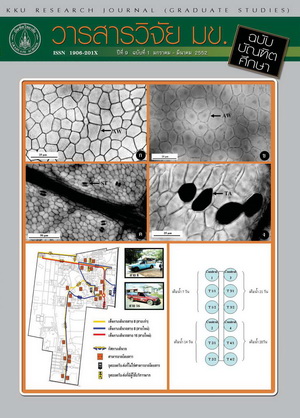Optimum Environmental Management of Human Settlement a Case Study of Nam Houng Village Xekatam Hydroelectric Power Project, Lao PDR.
Keywords:
Environmental management(การจัดการสิ่งแวดล้อม), Human settlement(การย้ายถิ่น), Xekatam hydroelectric power project(โครงการเขื่อนไฟฟ้าพลังน้ำเซกาต่ำ)Abstract
The study of optimum environmental management of human settlement, a case study of Nam Houng village for Xekatam Hydroelectric power project in Champasack province, Lao PDR, is aiming at comparing between the resettlement and the non-resettlement case based on the quality of life which may be affected by the project development and identifying the environmental management plans in order to recommend the optimum alternative. Nam Houng village is one of six villages that are supposed to be severely affected from Xekatam hydroelectric power project due to its location which is about one kilometer away from the proposed main dam site. The population of Nam Houng village is 232 people with 35 households. All of people in Nam Houng village are Nhaheun, one of 49 ethnic groups. The proposed main dam site is located in the Thong Houng area creating a reservoir of 7.6 km2 or 763 ha (476,875 Rai) in which the agricultural area of Nam Houng village will be inundated with total area of 124 ha (77,500 Rai).Two alternatives, resettlement and non-resettlement cases are taken into account. The first alternative is to relocate the Nam Houng villagers to a new area which is about 6 kilometers away from their homeland. The second one is to remain the Nam Houng villagers at the original location. The Multi Criteria Analysis (MCA) tool is applied to support the decision making process of whether Nam Houng village should be relocated in the new resettlement area or remained at its original location. Five criteria such as human use values, quality of the environment, quality of life, public health, and community participation and 24 sub- criteria were employed in the MCA.
The weigh values of the five main criteria given by the MCA were the human use values 27.06 %, the quality of life 26.94 %, the environment 19.30 %, the public health 16.06 % and the community participation 10.63 %. These percentages were used in comparing the two alternatives. The option one for resettlement case represented 56.01 point while the non-resettlement case represented 61.56 point. Therefore the non - resettlement case is better alternative.



